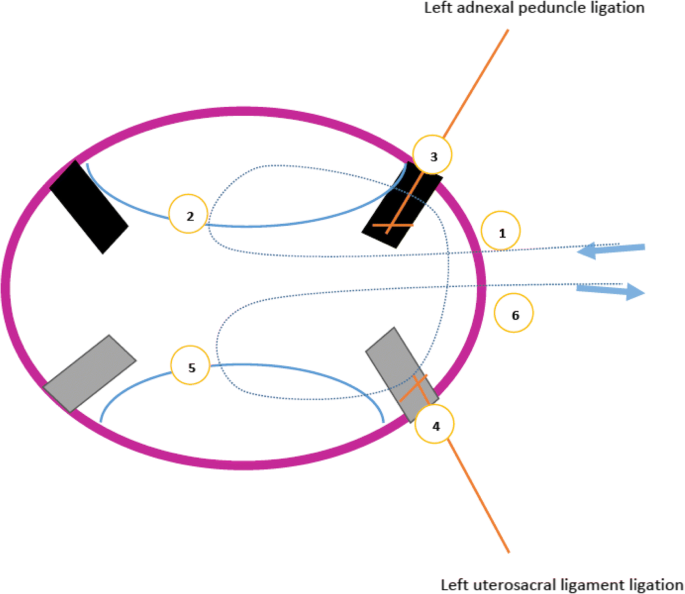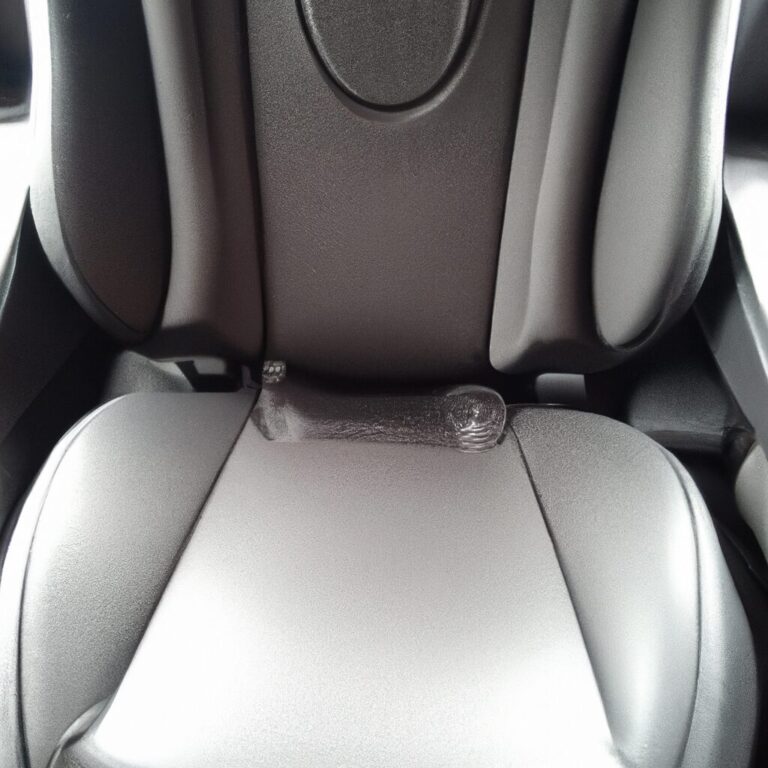What Are the Steps for Modifying Suspension?
To modify suspension, start by identifying the specific changes needed and acquire the necessary components. Then, adjust the vehicle’s suspension following manufacturer guidelines for a safe and effective modification.
Modifying a vehicle’s suspension is a crucial aspect of enhancing its performance and handling. Whether you’re looking to improve the ride quality, raise or lower the vehicle, or enhance its cornering abilities, understanding the steps for modifying suspension is essential.
By following the proper procedures, you can ensure that the modification is done accurately and safely. We’ll outline the key steps involved in modifying a vehicle’s suspension and provide valuable insights to help you achieve the desired results.

Credit: link.springer.com
Inspecting The Suspension
When modifying a suspension system, the first step involves inspecting the suspension components. This is crucial to identify any wear, damage, or issues that need attention.
Checking For Wear And Damage
- Look for visible signs of wear on suspension parts.
- Inspect bushings, rubbers, and joints for any damage.
- Check for leaks in the shock absorbers and struts.
Examining The Shock Absorbers
- Test the shock absorbers for proper functionality.
- Assess if there is any oil leakage from the shock absorbers.
- Look for signs of physical damage or corrosion.
Inspecting The Springs
- Ensure that the springs are not sagging or uneven.
- Check for any cracks or breaks in the springs.
- Verify that the springs are seated correctly in their mounts.

Credit: www.researchgate.net
Determining The Modifications Needed
When modifying a vehicle’s suspension, determining the modifications needed is the crucial first step. This involves identifying the desired performance, assessing the current suspension, and researching available options.
Identifying The Desired Performance
Determine the specific improvements you want to achieve with the suspension modifications. Whether it’s improved handling, better off-road capabilities, or a lower stance for aesthetic reasons, having a clear understanding of your desired performance outcomes will guide the modification process.
Assessing The Current Suspension
Before making any modifications, it’s essential to evaluate the current state of your vehicle’s suspension. This includes analyzing the existing components, identifying any weaknesses or deficiencies, and understanding how the current setup may be hindering the desired performance.
Researching Available Options
Take the time to research the available suspension modification options that align with your desired performance goals. This involves exploring different suspension components, such as coilovers, sway bars, and control arms, as well as considering the specific brands and technologies that best suit your needs.
Choosing The Right Components
When modifying your suspension, selecting the right components is crucial to achieving the desired performance and handling characteristics for your vehicle. This involves deciding on spring rates, selecting the appropriate shock absorbers, and considering other suspension upgrades. Let’s dive into each aspect to understand the key considerations and steps involved.
Deciding On Spring Rates
Choosing the right spring rates is a fundamental step in achieving the ideal balance between comfort and performance. It is essential to consider the weight of your vehicle, as well as your driving style and preferences. Consulting with a suspension specialist or manufacturer can provide valuable insights into selecting the most suitable spring rates for your specific application.
Selecting The Appropriate Shock Absorbers
When it comes to shock absorbers, there are various options available, including coilovers and adjustable dampers. The key is to choose shock absorbers that complement the chosen spring rates and provide the desired level of damping control. Understanding the impact of different shock absorber designs on ride quality and handling can help in making an informed decision.
Considering Other Suspension Upgrades
While springs and shock absorbers play a significant role in suspension modifications, considering other upgrades such as sway bars, bushings, and control arms can further enhance the overall performance and responsiveness of the suspension system. Each component should be carefully evaluated based on its compatibility with the existing setup and its potential to contribute to the desired handling characteristics.

Credit: www.amazon.com
Adjusting Ride Height And Stance
Adjusting ride height and stance is a crucial aspect of modifying suspension for improved performance and aesthetics.
Understanding Ride Height
Ride height refers to the distance between the ground and the chassis. It greatly influences a vehicle’s handling and look.
Modifying Ride Height
To adjust ride height, utilize coilovers or adjustable suspension components for precise customization.
Achieving The Desired Stance
The desired stance can be achieved by balancing ride height, wheel size, and alignment to create a visually appealing appearance.
Installation And Testing
When it comes to modifying your suspension, the installation and testing steps are crucial. Installing the modified suspension properly ensures that you will get the desired results and improved performance. Additionally, performing alignment and corner balancing along with a thorough test drive helps fine-tune the suspension according to your driving needs. Let’s take a closer look at each step:
Installing The Modified Suspension
The first step in modifying your suspension is the installation of the modified components. This process involves replacing the existing components with the upgraded ones that are designed to enhance the performance and handling of your vehicle. To install the modified suspension correctly, follow these steps:
- Begin by gathering all the necessary tools and equipment.
- Securely lift the vehicle using a jack or a lift.
- Remove the wheels to gain access to the suspension components.
- Detach the old suspension components carefully, making sure to follow the manufacturer’s instructions.
- Install the modified suspension components, ensuring they are positioned correctly and securely fastened.
- Reinstall the wheels and lower the vehicle.
- Inspect the installed suspension components for any looseness or misalignment.
Performing Alignment And Corner Balancing
After installing the modified suspension, it is crucial to perform alignment and corner balancing to optimize the handling and balance of your vehicle. Proper alignment and corner balancing help distribute the weight evenly and improve the overall performance. Follow these steps to perform alignment and corner balancing:
- Find a professional alignment and corner balancing service that specializes in performance modifications.
- Take your vehicle to the service center.
- Ensure that the vehicle is placed on a level surface.
- Follow the instructions of the technician as they adjust the suspension components to achieve the desired alignment and corner balancing.
- Double-check the alignment and corner balancing after the adjustments are made to ensure accuracy.
Test Driving And Fine-tuning
Once the modified suspension is installed and aligned, it is essential to test drive the vehicle to evaluate its performance and make necessary fine-tuning adjustments. Test driving helps identify any discrepancies or areas that require further adjustments. Follow these steps for a successful test drive and fine-tuning:
- Select a suitable driving route that allows you to experience various road conditions.
- Start your test drive, gradually increasing your speed to evaluate the handling and comfort.
- Pay attention to any unusual noises, vibrations, or handling issues.
- If you encounter any issues, make note of them and adjust accordingly.
- Return to the service center to fine-tune the suspension based on your observations during the test drive.
- Repeat the test drive and fine-tuning process until you achieve the desired performance.
Frequently Asked Questions Of What Are The Steps For Modifying Suspension?
How To Modify Car Suspension?
To modify car suspension, follow these steps: 1. Consult with a professional to determine the type of modification needed. 2. Choose suitable suspension components based on your vehicle’s specifications and desired ride quality. 3. Install the new components, ensuring they are correctly fitted and aligned.
4. Test and adjust the suspension settings as necessary to achieve the desired performance and handling. 5. Regularly maintain and inspect the suspension system for optimal performance and safety.
How Do You Change Suspensions?
To change suspensions, lift the vehicle and secure it properly. Remove the old suspension components and replace them with new ones, following the manufacturer’s instructions. Finally, lower the vehicle and test the new suspensions for proper function.
What Is The Easiest Way To Upgrade Suspension?
The easiest way to upgrade suspension is to install aftermarket coilovers or lowering springs. These options provide improved handling and a more aggressive look for your vehicle. Upgrading sway bars and bushings can also enhance suspension performance. Regular maintenance and proper alignment are essential for optimal suspension function.
What Is The Process Of Suspension System?
The suspension system absorbs shock and provides stability for the vehicle. It consists of components like springs, shocks, and linkages. When the vehicle encounters bumps or uneven surfaces, the suspension system helps to maintain a smooth and comfortable ride. Regular maintenance is necessary to ensure optimal performance.
Conclusion
Modifying suspension involves crucial steps that enhance vehicle performance and comfort. By following the proper procedures and using quality components, you can achieve a smoother ride and improved handling. Always consult with professionals for expert guidance and ensure safety throughout the modification process.


